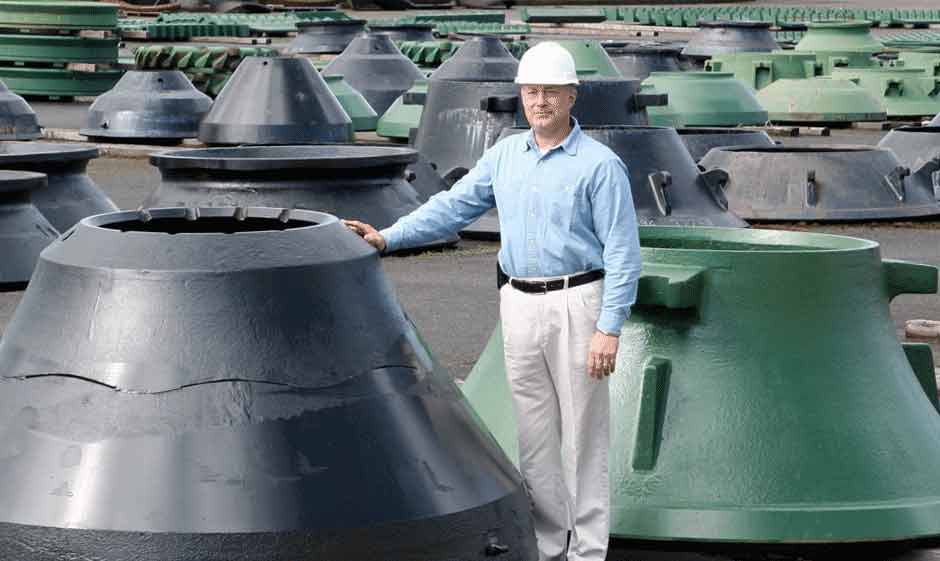What causes upper chamber wear in cone crushers?
— By Chuck Hendrickson, former Columbia Steel Product Engineering Manager
We have a two 7′ shortheads that have high wear in the upper part of the crushing chamber. Liner changes are approximately every 30 days. Work index of the material is 22. We are also reducing the material that feeds to these SHs with 2-7′ standards. Screening removes some of the fines but not all. These shortheads have fine profile liners. Do you have any suggestions?
Here’s a series of short, easy-to-answer questions to help resolve your kind of situation:
1. What is the largest size material going into the crusher? (the size by 2 dimensions, i.e. 4 inches x 3 inches)
2. What size range (again, by 2 dimensions) does 50 percent of the gross feed material fall into?
3. What is the actual physical discharge setting of the crushers?
The two 7-foot standard cones in normal crushing conditions may be run at a 1.500 inch c.s.s. and would send the S.H. cones a moderate percentage of 3 inch by 2 inch material in an open circuit. The 50 percent size range would be something like 1.500 inches by .750 inch material and if in a closed circuit, a finer feed blend would be prevalent.
The liners you are using sound to either be too fine for the job, or are losing their available feed opening through normal wear. With the 30 day liner changes that you’re experiencing, that loss of feed opening becomes apparent within the first 25 percent of the liners’ life. The seeming high wear rate near the top of the liner set you describe begins near that same time and progressively diminishes gross output rate.
This is the most common phenomena present in cone liners and the subject we deal with most often when providing our Hi-Pro / H-D liner profiles to customers. The object is to provide liner sets that will accept large feed size of a given blend through total expenditure of the liners, while still providing the percentage of sized discharge material required. Simply applying coarser liners doesn’t fix the condition.
This increasing of the feed opening is often misunderstood as an attempt to allow for larger reduction ratios. That’s not the case at all — we just don’t put wear metal where it’s not needed.
That’s the rate of wear you’re seeing in the liners you use now. In your case, we’d likely provide a fine to medium liner set with an increased feed opening. These are the kind of liners that allow the top sized feed material to be accepted by the liners on the closed side (or at least for within 15 degrees of the closed side at the top circumference of the crusher.) We’d need to know what sizing requirements you have for these crushers in order to offer a specific liner set for the need.
Your question is common to what we deal with daily for most models of crushers. For example, for 7-foot Symons crushers in particular, we’ve developed several options in degrees of fine verses feed opening and thickness. Your situation is common and reasonably easy to deal with.
